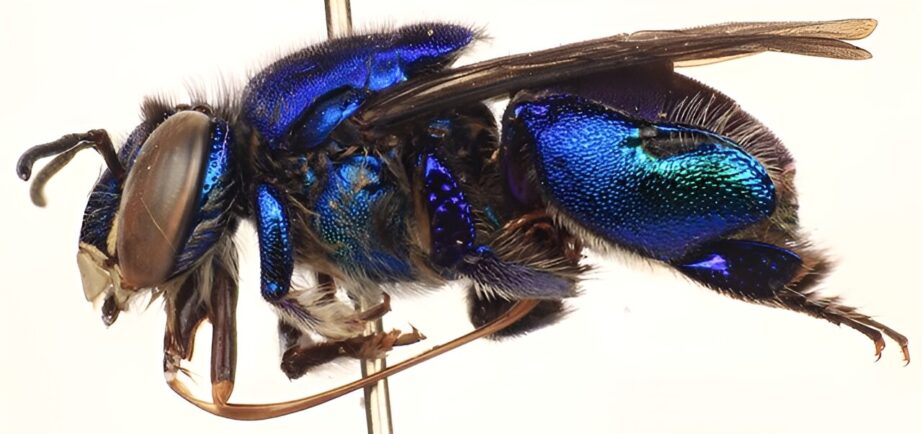A survey of orchid bees in the Brazilian Amazon state of Rondônia, carried out in the 1990s, is shedding new light on the impact of deforestation on the scent-collecting pollinators, which some view as bellwethers of biodiversity in the neotropics.

The findings, from a researcher at the University of Kansas, are published in the journal Biological Conservation.

“This study on orchid bees was an add-on to previous research on stingless bees. Orchid bees are so easy to collect, so we added them to our broader survey of bee biodiversity across this rapidly developing region in the Amazon,” said lead author J. Christopher Brown, professor of geography & atmospheric science at KU.

“We’ve known for decades that particular fragrances like eucalyptus oil, for example, attract male orchid bees, which naturally collect similar fragrances from orchids to use in mating. All you do is dip cotton balls into a variety of chemical attractants and hang these on a string in the open air. The bees start arriving in minutes, hovering around the baits and displaying their often metallic-hued blue and green colors.”

Brown said that this ease of collection, in part, has made orchid bees, native to the tropical rainforests of the Americas, a regular subject of studies to determine the impact of deforestation and forest fragmentation on biodiversity. In a region of intense deforestation, the bees, because they are pollinators, help reveal the toll on local ecosystems more broadly.

“They were among the first types of organisms studied to understand the impact of that deforestation on the general biology and ecology of an area,” he said. The researchers identified species of orchid bee, Eulaema nigrita and 11 other species, that are particularly associated with degraded vs. preserved environments, respectively.

Of the experience in the field with orchid bees, Brown said, “I had previously seen orchid bees in museum collections, but seeing them in the field was a wholly different experience. It’s breathtaking seeing these bees appear at the baits out of nowhere.”

Brown conducted all the fieldwork in 1996 based on a methodology developed with Marcio Oliveira, currently of the National Institute for Amazonian Research in Manaus, who was a fellow graduate student at the time.

“He suggested that, given our opportunity to collect stingless bees in Rondônia, we should also include orchid bees in our research,” Brown said.
“To achieve this, we developed the methodology with the assistance of two young beekeepers from the region who temporarily abandoned their farming activities to join us in collecting bees throughout the state of Rondônia. Due to various commitments, publication was delayed.

Fortunately, the scientific community appreciates the sharing of long-past data and observations.”
Provided by University of Kansas
 Any questions or if buying, contact me HERE
Any questions or if buying, contact me HERE


